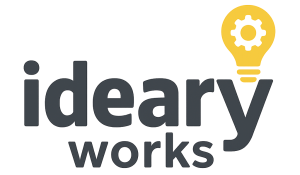What is Cognitive Fluency?
Cognitive fluency refers to the ease with which individuals can process and understand information. It encapsulates the mental effort required to comprehend various forms of stimuli, including language, images, and experiences. In psychological terms, cognitive fluency is often linked to the clarity and accessibility of information, where clearer and simpler materials are processed more swiftly and with greater accuracy. When cognitive fluency is high, learning often feels more natural and intuitive, facilitating an efficient acquisition of knowledge and skill.
The relationship between cognitive fluency and mental effort is significant. When learners encounter material that is presented in a straightforward manner, they expend less cognitive resources to decode the content, leading to a more favorable learning environment. Consequently, information that is easy to process is typically perceived as more trustworthy, likely because cognitive fluency can influence judgment and decision-making. For instance, advertisements that employ simple language or catchy visuals can yield greater consumer response because they are cognitively easier to navigate.
The Importance of Cognitive Fluency in Learning
Cognitive fluency is a crucial factor in the learning process, significantly influencing how effectively individuals acquire knowledge and skills. This concept refers to the ease with which information is processed, and it plays a vital role in enhancing retention and comprehension. When learners find information cognitively fluent, they are more likely to engage with the material, understand complex concepts, and successfully integrate new knowledge into their existing frameworks.
The mechanisms through which cognitive fluency operates can greatly impact educational outcomes. For instance, when students encounter ideas or information that is clearly articulated and well-structured, they experience less cognitive load, allowing for better retention of knowledge. Conversely, when faced with convoluted explanations or intricate details, learners may struggle to grasp the topics at hand, which can hinder their ability to synthesize new information.
Furthermore, cognitive fluency facilitates the acquisition of new skills by reducing the mental barriers that often accompany complex learning tasks. When information is presented using simple language, organized layouts, or enhanced with visual aids, students can process the content more efficiently. This approach not only aids in their understanding but also promotes confidence in their ability to learn. For example, utilizing infographics or diagrams can simplify intricate concepts, allowing learners to visualize relationships and processes, thus enhancing their overall cognitive fluency.
Several strategies can be implemented in educational settings to bolster cognitive fluency. Encouraging the use of straightforward, accessible language, coupled with clearly defined learning objectives, can motivate students and clarify expectations. Additionally, incorporating various multimedia tools, such as videos and interactive activities, can engage diverse learning styles, making the educational experience richer and more productive.
Cognitive Fluency and Decision Making
Cognitive fluency plays a pivotal role in shaping our decision-making processes. At its core, cognitive fluency refers to the ease with which information is processed. Individuals often gravitate toward options that are simpler to comprehend, a tendency rooted in the psychological desire for efficiency. When faced with multiple choices, the inherent preference for clarity means that ideas or options which are easier to understand are typically favored over those that are more complex or ambiguous.
This preference extends beyond mere convenience; cognitive fluency significantly influences perceptions of truthfulness, attractiveness, and satisfaction with decision outcomes. Research has shown that information presented in a clear and straightforward manner can enhance the perceived trustworthiness of the message. For instance, when survey participants are presented with complex arguments, they are more likely to question their credibility. Conversely, simpler messages tend to be accepted as more truthful and reliable.
Additionally, attractiveness in options can also be enhanced through cognitive fluency. A study conducted by researchers highlighted that participants rated products that were presented in an easily understandable format as more appealing compared to those that were complicated or poorly articulated. This inherent bias towards cognitive fluency not only affects immediate reactions but also the long-term satisfaction derived from chosen options. Individuals are likely to be more content with their decisions when these decisions were made following a path of cognitive ease.
Several psychological experiments illustrate these phenomena effectively. One notable experiment requires participants to read statements with varying levels of clarity. Results consistently demonstrate that those who encountered clearly presented statements reported higher credibility assessments and greater satisfaction with their choices. This body of evidence underscores the importance of cognitive fluency in decision-making, as it influences not only the choices we make but also our feelings towards those choices.
Enhancing Cognitive Fluency in Everyday Life
Enhancing cognitive fluency in everyday situations can significantly improve both learning and decision-making processes. One of the fundamental strategies involves simplifying complex information. This can be achieved through the use of visual aids, such as charts or infographics, which can help distill overwhelming data into manageable pieces. By presenting information visually, individuals can increase their understanding, making it easier to process and recall relevant details.
Another technique to reduce cognitive load is the application of chunking, where information is grouped into smaller, more digestible units. For instance, when studying for an exam, it is more effective to divide topics into sections and tackle them sequentially, rather than attempting to cover an entire chapter at once. This method not only facilitates better retention but also cultivates greater confidence in one’s ability to grasp and manage the material.
Effective communication also plays a vital role in enhancing cognitive fluency. By articulating thoughts clearly and concisely, individuals can reduce potential misunderstandings, thereby promoting seamless exchanges of information. Adopting the practice of active listening can further improve interactions, ensuring that all participants grasp the key points being discussed. Engaging in discussions that encourage questions and clarifications can also enhance cognitive fluency by promoting a collaborative learning environment.
Moreover, creating a conducive learning environment is essential for fostering cognitive fluency. This entails minimizing distractions, organizing one’s workspace, and adopting routines that promote focus and concentration. Adequate breaks during intense study or work sessions are crucial, as they allow the brain to recuperate and process information more effectively. In professional settings, encouraging a culture of knowledge sharing can further enhance cognitive fluency among team members, leading to improved collaboration and innovation.
By implementing these strategies, individuals can significantly improve their cognitive fluency, resulting in more efficient learning and decision-making both personally and professionally.



